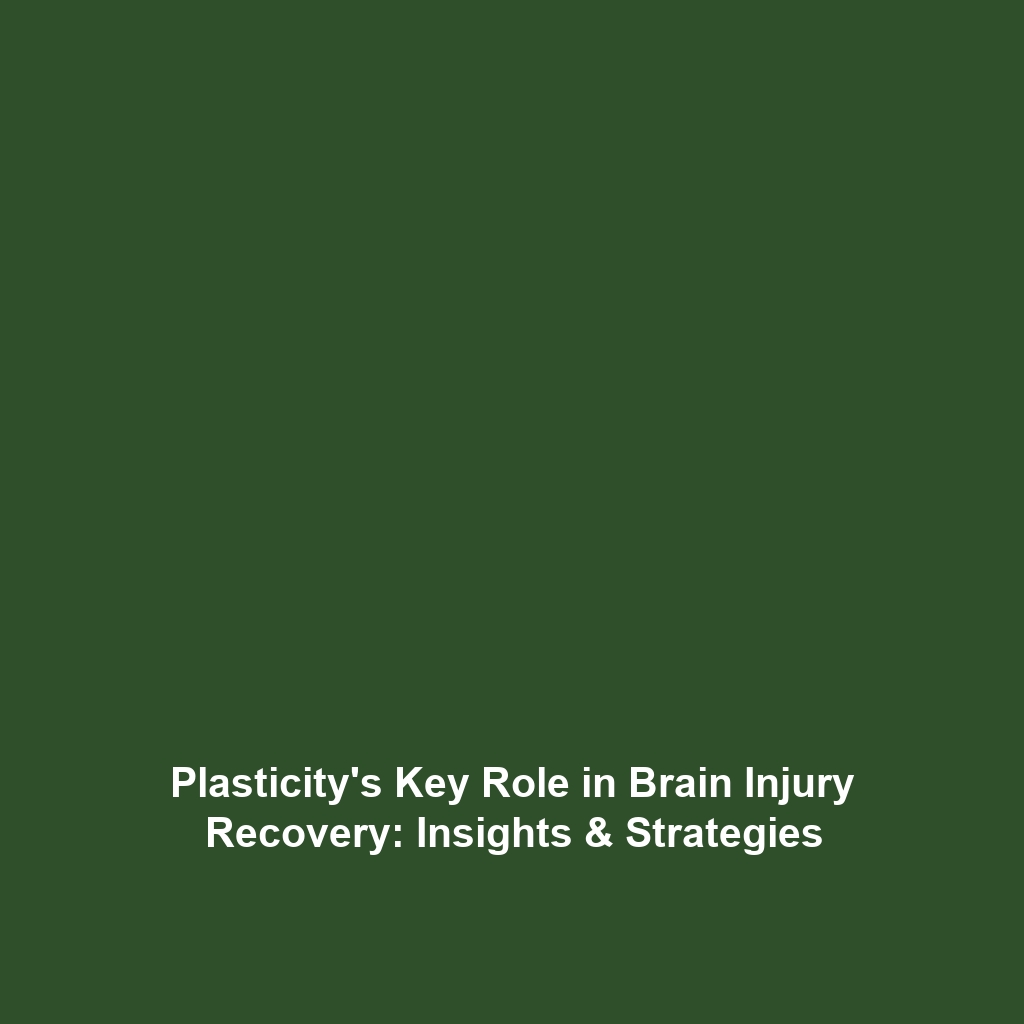Role of Plasticity in Recovery from Brain Injuries
Introduction
The role of plasticity in recovery from brain injuries, such as stroke or traumatic brain injury (TBI), is a critical area of study within the field of biomechanics. This phenomenon highlights the brain’s remarkable ability to reorganize itself, forming new neural connections in response to injury. Understanding how plasticity facilitates recovery can inform rehabilitation strategies and improve outcomes for individuals affected by these debilitating conditions.
Key Concepts
Neuroplasticity
Neuroplasticity refers to the brain’s capacity to change by reorganizing its structure, functions, and connections. This adaptability is vital for recovery post-injury, allowing undamaged regions to compensate for lost functions.
Types of Plasticity
There are two main types of plasticity:
- Structural Plasticity: Involves the physical changes in the brain’s structure.
- Functional Plasticity: The ability of the brain to move functions from damaged areas to healthier ones.
Biomechanical Principles
In the context of biomechanics, the understanding of plasticity impacts how rehabilitation techniques are developed. The correlation between physical movements and neural adaptation is critical for optimizing recovery protocols.
Applications and Real-World Uses
Applications of plasticity in recovery from brain injuries have shown significant promise in various rehabilitation strategies:
- Cognitive Rehabilitation: Leveraging plasticity to improve cognitive functions affected by stroke through tailored cognitive exercises.
- Physical Therapy: Implementing repetitive motor tasks that harness plasticity to encourage motor skills recovery.
- Neurofeedback: Utilizing biofeedback methods to facilitate self-regulation of brain function and enhance recovery.
Current Challenges
Despite promising advances, there are several challenges in studying or applying plasticity in recovery from brain injuries:
- Variability in individual responses to rehabilitation.
- Limited understanding of optimal timing and intensity of interventions.
- Need for more effective and standardized assessment tools.
- Challenges in translating laboratory findings to clinical practice.
Future Research and Innovations
Upcoming research in plasticity and brain injury recovery is poised to yield significant innovations:
- Next-Gen Therapies: Development of targeted therapies enhancing neuroplastic processes.
- Advanced Neuroimaging: Improved imaging techniques provide insights into plasticity’s dynamics, aiding in tailored rehabilitation approaches.
- Wearable Technology: Incorporating wearable devices to monitor progress and apply real-time stimulation to support recovery.
Conclusion
Understanding the role of plasticity in recovery from brain injuries is crucial for enhancing rehabilitation practices within the scope of biomechanics. Continued research and innovation will help harness this natural ability of the brain, leading to better recovery outcomes for those affected by stroke and TBI. For further reading on related topics, consider exploring articles on neurorehabilitation techniques or biomechanical assessments in therapy.
